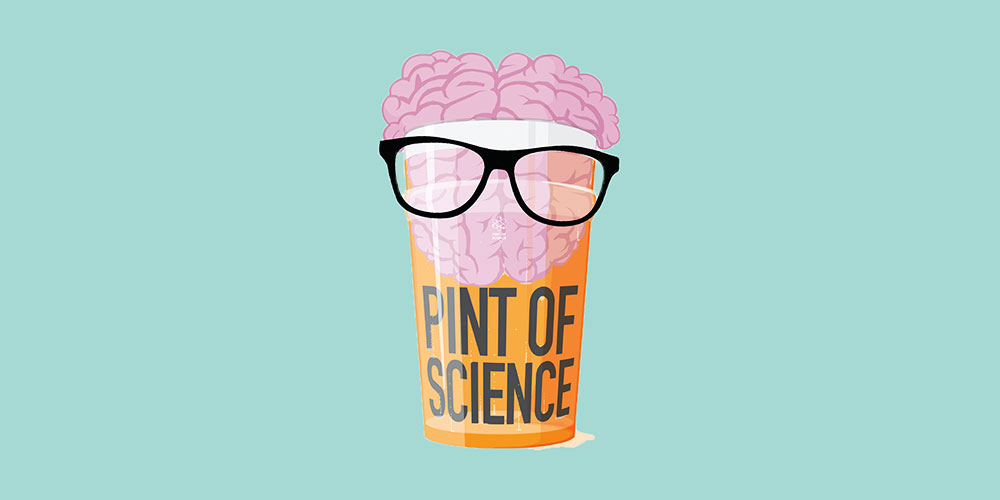The global science festival Pint of Science events take place every year across 500 cities and 27 countries and are growing in popularity. A number of science-based presentations are arranged in local pubs with the main objective of bringing science to the general public in a relaxed and casual environment.
In 2025, we are looking forward to organising the event again in bars and pubs between May 19-21. Every year during the festival people come to the local bars to hear funny, relaxed and informative talks from local scientists and learn something new about the world and the human society. Here is the opportunity for you to meet people eager to share their research over a pint of beer!
From Bones to Genomes: Tracing the Evolution of Fast-Swimming Fishes
Emanuell Duarte Ribeiro (Postdoctoral Researcher, University of Basel)
Marlins, dolphins, sharks, and ichthyosaurs exhibit streamlined body plans, a striking case of convergent evolution among distantly related vertebrates inhabiting the open-waters. In this talk, I will present recent findings on the morphological and genomic pathways driving body elongation in pelagic cichlids from Lake Tanganyika—one of the most outstanding examples of rapid species diversification. From bones to genomes, these insights shed light on the evolutionary mechanisms underpinning adaptations to the pelagic environment.
Endless digit forms most beautiful
Patrick Tschopp (Prof. Dr., DUW Zoology, University of Basel)
Fingers and toes are segmented into individual bones that are connected by synovial joints. The number and size of these bones varies in different vertebrate species, to help generate diverse limb morphologies and functions. Given the range of numbers – from 1 joint in the human thumb to over 10 in the digits of whales – it has been speculated that self-organizing mechanisms may underlie these repetitive segmentation patterns.
We will discuss how – using embryonic single-cell molecular data, in vivo growth series, and mathematical modeling – we begin to understand how vertebrate digits are patterned during development, and how these patterns can change on an evolutionary timescale.
My aquatic life through the caddisflies (Trichoptera)
Romina Álvarez-Troncoso (Limnologist, Freelance cooperating with University of Vigo and FHNW)
Since I was a kid, I love water in all the formats: ocean, rivers, streams, lakes, wetlands...and luckily I could study Biology and since then I have been working as limnologist carrying on studies of aquatic insects and other organisms in rivers, lakes, reservoirs...My favourite ones are the caddisflies (Triptera), they are insects that allow us to know the water quality. They live all over the World and they are very diverse and abundant. The larvae live in water and the adults are fliers.
Pint of Science Basel 2025
19 May 2025
- from 18:30 pm – Klara, Clarastrasse 13, 4058 Basel: Connecting Art and Science
- from 18:30 pm – Didi Offensiv, Erasmusplatz 12, 4057 Basel: Built by Science: From Mini-Organs to Machine Minds
20 May 2025
- from 19.00 pm – Klara, Clarastrasse 13, 4058 Basel: Investition Gesundheit: Kosten verstehen, Bewegung nutzen
- from 18:30 pm – Didi Offensiv, Erasmusplatz 12, 4057 Basel: Bodies in Motion: Evolution’s Shape-Shifting Story
21 May 2025
- from 18:30 pm – Klara, Clarastrasse 13, 4058 Basel: Brain and Development: Unlocking the Secrets of Learning and Adaptation
- from 18:30 pm – Manabar, Güterstrasse 99, 4053 Basel: Quantum Technologies: Signal in the Noise?

